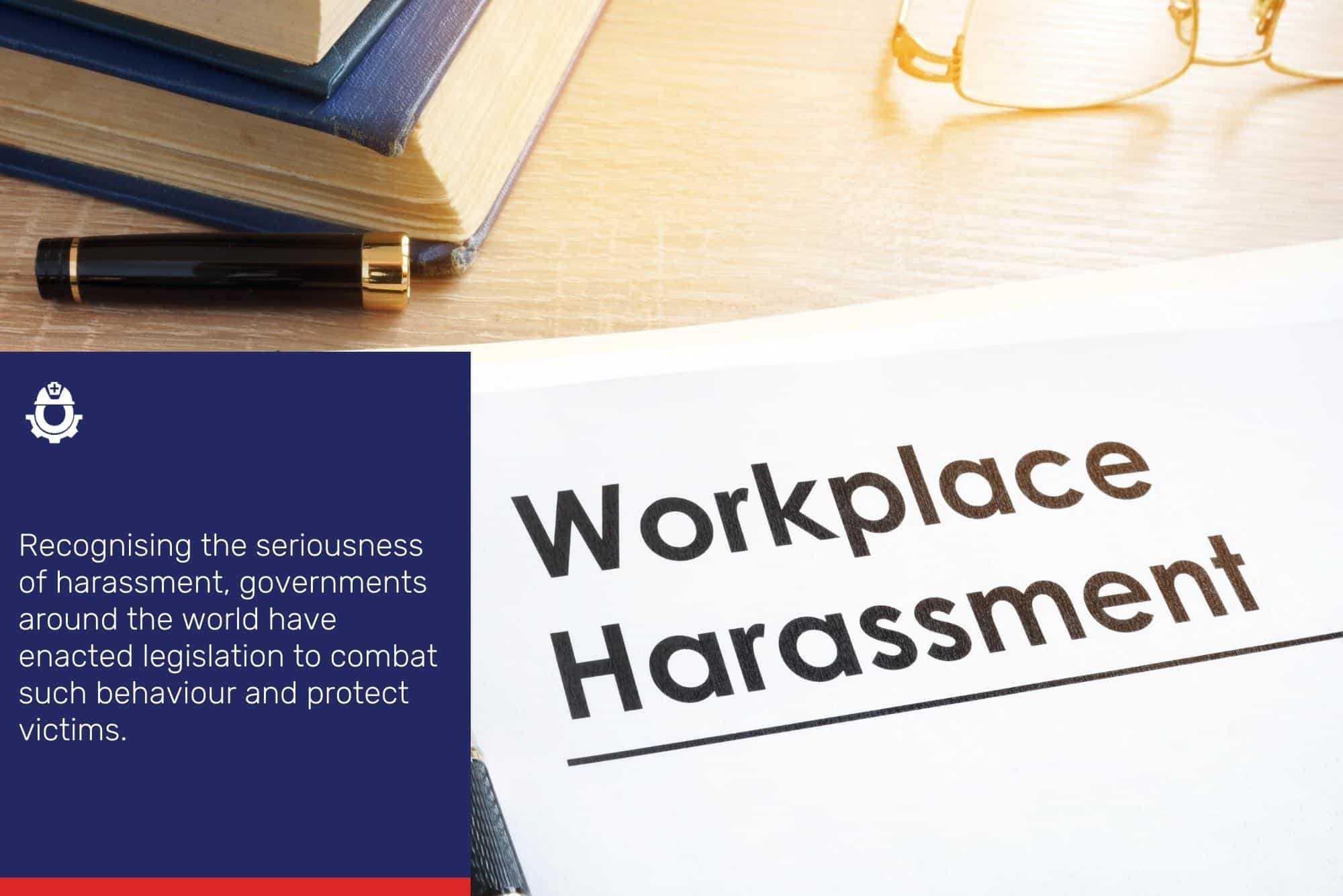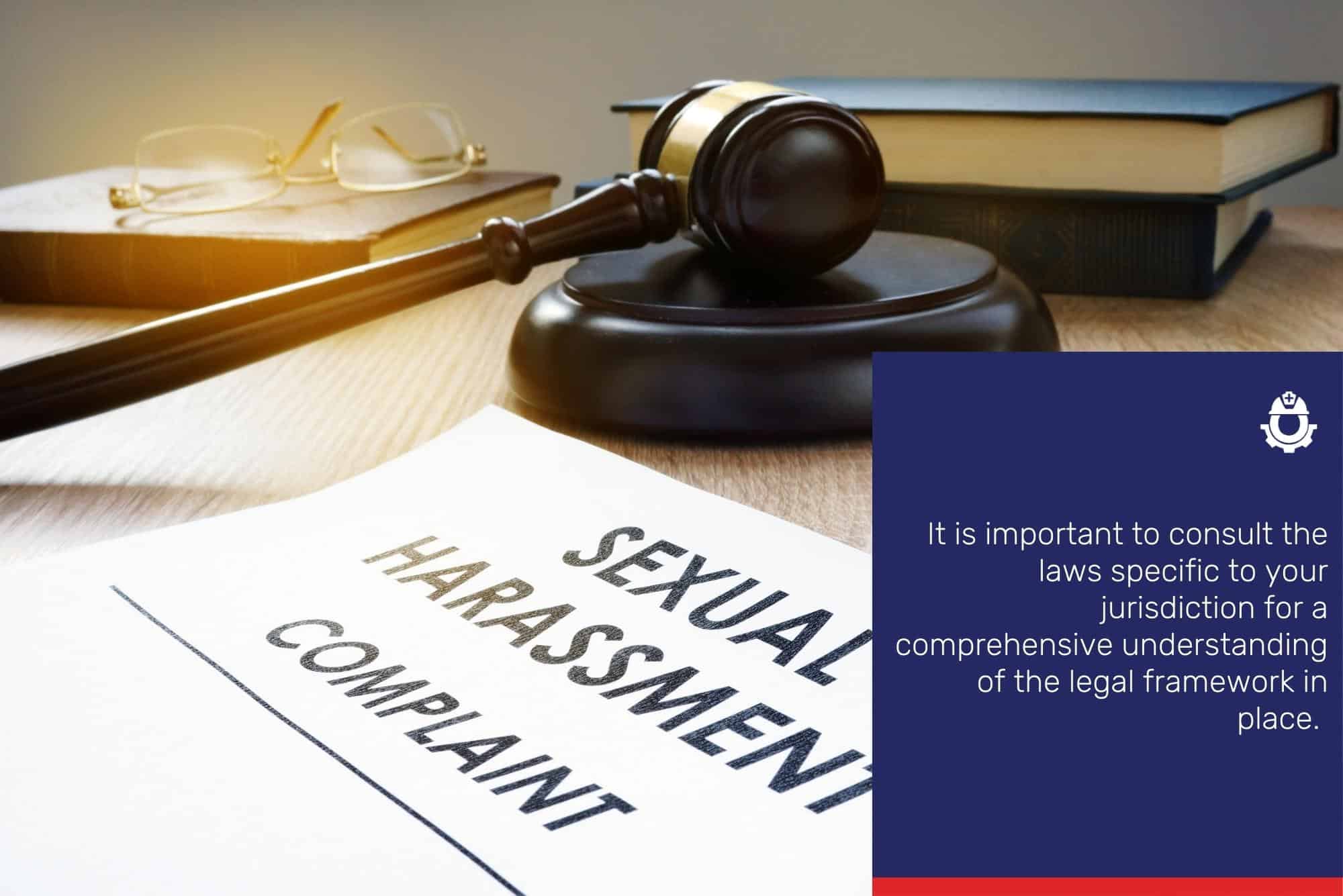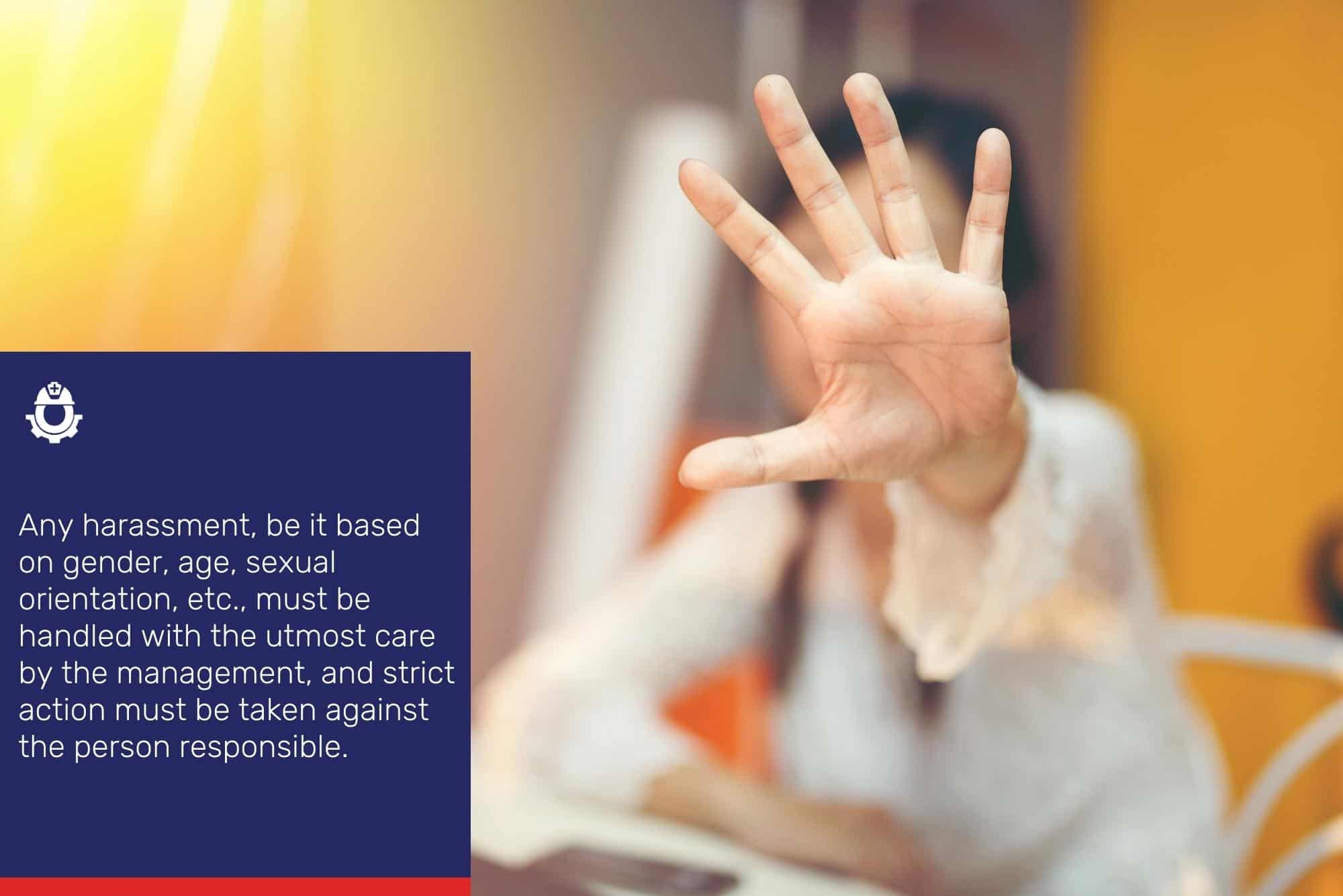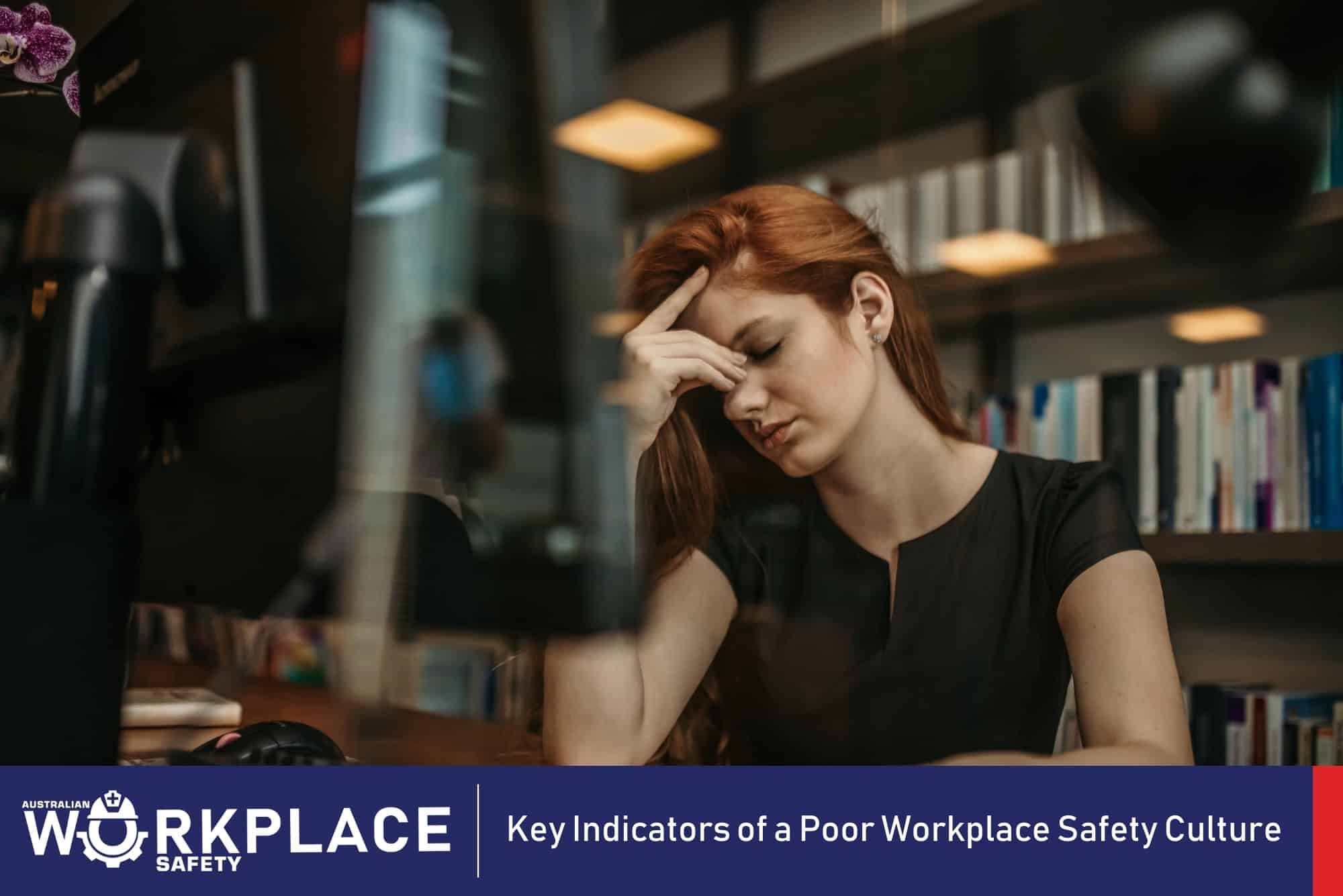Understanding the Impact, Legislation and Consequences of Harassment is crucial to a safer workplace
Harassment is an unfortunate reality that affects individuals across various domains, from workplaces to educational institutions and even online platforms. It is crucial to comprehend the definition, grasp its profound impact on victims, recognise the legal requirements associated with combating harassment, and comprehend the severe consequences faced by harassers. In this blog post, we will delve into these aspects to shed light on the significance of addressing harassment and fostering safe environments for everyone.

Understanding Harassment
Harassment refers to unwelcome or offensive behaviour directed towards an individual or a group based on protected characteristics such as gender, race, religion, sexual orientation, or disability. It can manifest in different forms, including verbal, written, physical, or electronic. Harassment often occurs repeatedly and creates an intimidating, hostile, or offensive environment for the victims.
The Impact on Victims
The impact of harassment on victims is profound and far-reaching, affecting their physical, mental, and emotional well-being. Victims often experience anxiety, depression, stress, and a decline in their self-esteem. The constant fear of encountering the harasser or retaliation can lead to a hostile work or living environment, hindering productivity and personal growth. In severe cases, harassment can result in post-traumatic stress disorder (PTSD) or even suicide.
Moreover, victims of harassment may face difficulties in maintaining relationships, both personal and professional. The trauma endured may extend beyond the immediate time frame, causing long-term psychological and emotional distress. It is vital to understand that harassment not only affects individuals but also disrupts the overall fabric of an Workplace or community, leading to decreased morale, productivity, and trust.

The Legislation and Requirements
Recognising the seriousness of harassment, governments around the world have enacted legislation to combat such behaviour and protect victims. These laws vary across jurisdictions, but they generally emphasise the following requirements:
Prohibition – Legislation prohibits harassment based on specific protected characteristics and defines what constitutes harassment in different settings.
Prevention and Education – The Person conducting a business or undertaking (PCBU), educational institutions, and other workplaces are obligated to implement policies and training programs that promote awareness, prevention, and appropriate response to harassment incidents.
Reporting and Investigation – Clear procedures for reporting and investigating harassment complaints should be established, ensuring confidentiality, impartiality, and timely action.
Remedies and Support – Legislation often provides remedies for victims, such as compensation, reinstatement, or other appropriate actions. Additionally, Workplaces are encouraged to offer support mechanisms such as counselling or employee assistance programs.
The Consequences of Harassment
Perpetrators of harassment face various consequences, both legal and non-legal, depending on the severity and context of the offense. These consequences may include:
Legal Actions – Harassers can face civil lawsuits, resulting in financial penalties, compensatory damages, or injunctive relief. In more severe cases, criminal charges may be filed, leading to fines, probation, or imprisonment.
Reputation Damage – Harassment allegations can tarnish the reputation of individuals or Workplaces, impacting personal and professional relationships. Public awareness and social media platforms can amplify the repercussions, leading to long-term consequences.
Employment Consequences – Harassment in the workplace can result in disciplinary actions, including warnings, demotions, suspensions, or even termination. Employers may also be held liable for failing to address harassment complaints adequately.
Personal Accountability – Harassers may face personal consequences such as strained relationships, loss of friendships, and alienation from social circles. The emotional toll of guilt.

Some Laws in various countries regarding harassment
Here are some examples of laws and regulations related to harassment in different countries:
United States
Title VII of the Civil Rights Act of 1964 – Prohibits harassment based on race, colour, religion, sex, and national origin in workplaces with 15 or more workers.
Americans with Disabilities Act (ADA) – Protects individuals with disabilities from harassment and discrimination in employment, public accommodations, and other areas of daily life.
Title IX of the Education Amendments Act of 1972 – Addresses sexual harassment and gender-based discrimination in educational institutions that receive federal funding.
United Kingdom
Equality Act 2010 – Covers various forms of harassment, including harassment based on protected characteristics such as age, disability, gender, race, religion, sexual orientation, etc.
Protection from Harassment Act 1997 – Provides protection against stalking and harassment both online and offline.
The Employment Rights Act 1996 – Provides legal remedies for workers who experience harassment in the workplace.
Canada
Canadian Human Rights Act – Prohibits harassment and discrimination based on protected characteristics, including race, national or ethnic origin, sex, age, disability, etc. in federally regulated sectors.
Occupational Health and Safety Act – Requires employers to protect workers from workplace harassment and provide a safe work environment.
Australia
Sex Discrimination Act 1984 – Prohibits sexual harassment and discrimination in various areas, including employment, education, and provision of goods and services.
Fair Work Act 2009 – Sets out provisions for preventing workplace harassment and provides remedies for victims.
These are just a few examples, and many countries have their own specific legislation addressing harassment. It is important to consult the laws specific to your jurisdiction for a comprehensive understanding of the legal framework in place.

In Summary
Any harassment, be it based on gender, age, sexual orientation, etc., must be handled with the utmost care by the management, and strict action must be taken against the person responsible. The PCBU must inform the workers that harassment is not only prohibited but also punishable in the workplace. Special training must be provided to all managers, supervisors, and workers.
There must be multiple reporting channels for the filing of complaints in the workplace. The workplace must be monitored using workforce and technology. The workers must be protected through the policies and procedures processes.





